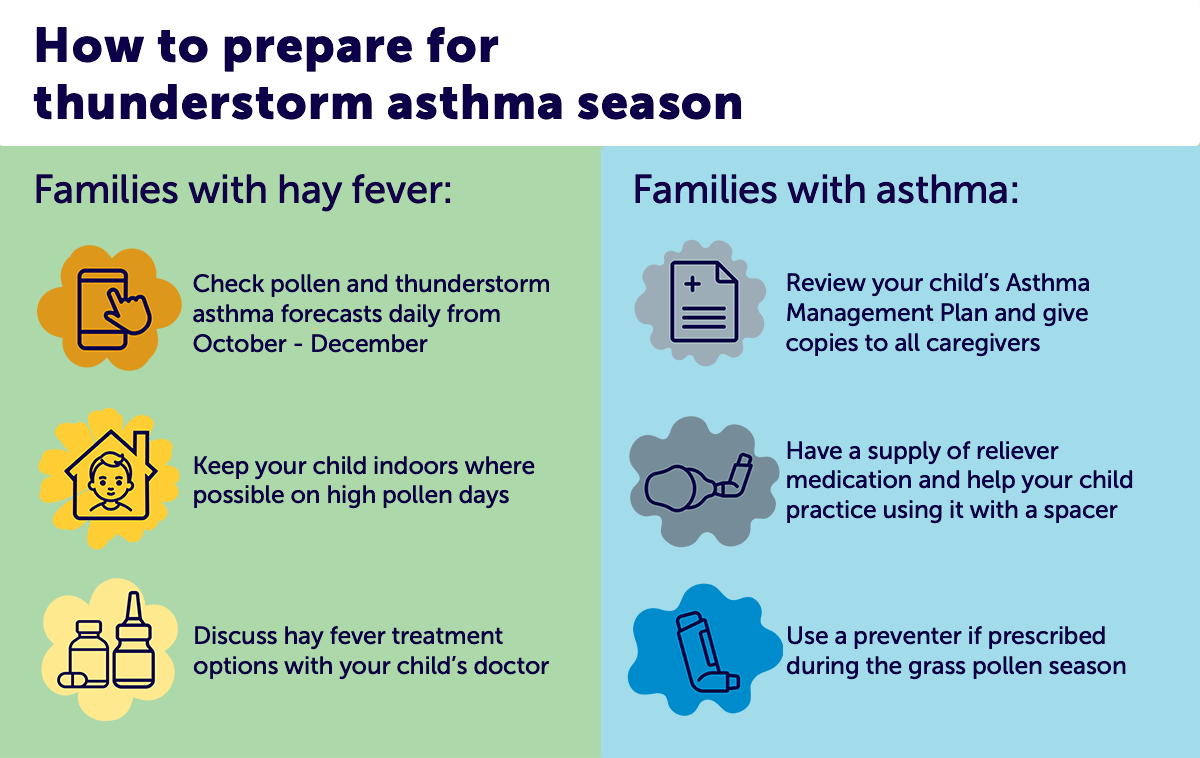Thunderstorm asthma
Increased risk between October and Decemb

Thunderstorm asthma
Increased risk between October and Decemb
If you've lived through a Melbourne spring you know it isn't as simple as spring weather. We get a slight raise in temperature post winter (otherwise known as Fool's Spring), before plummeting to the depths of despair for a Second Winter. We then enter the Spring of Deception and The Swooping (hopefully you have stayed safe from the magpies and hooded plovers), before falling headfirst (or should it be nose first) into The Pollening.
This is, of course, not an official season. But we have all noticed an increase in grass pollen levels, whether it be from extra sneezes, stronger hay fever symptoms, or an increase in asthma symptoms.
This increase in seasonal asthma and hay fever also brings an escalated risk of thunderstorm asthma. Thunderstorm asthma is triggered by a combination of higher grass pollen levels and a certain type of thunderstorm.
Thunderstorm asthma can occur even in people who have never had asthma before.
To protect yourself and your family this pollen season:


Call an ambulance (000) if:
Go to hospital is:
See a doctor or health professional if:
Look after your child at home if:
For more information visit https://www.rch.org.au/kidsinfo/fact_sheets/thunderstorm_asthma/